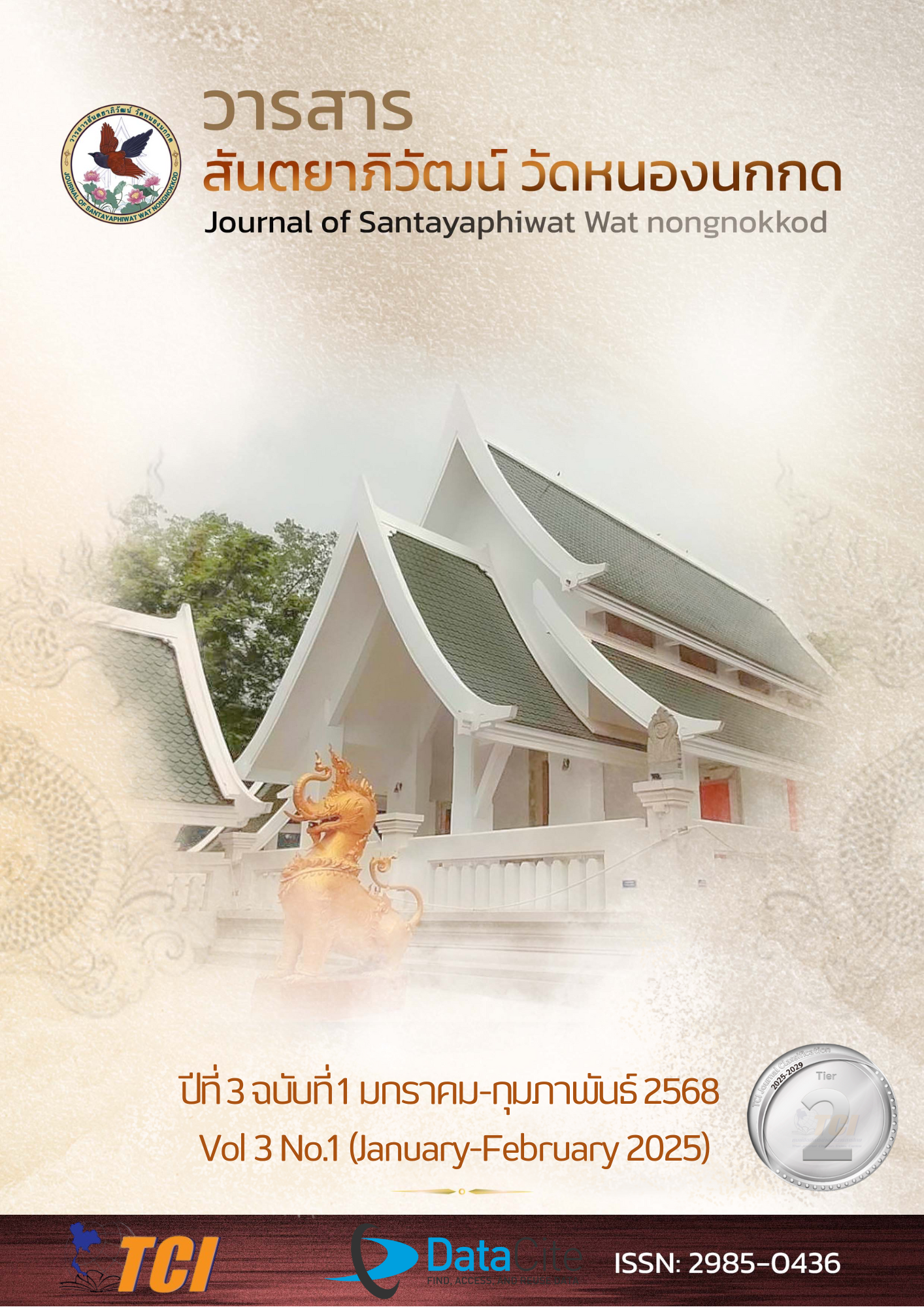THE STUDY OF ENGLISH LEARNING MOTIVATION AMONG FIRST-YEAR STUDENTS IN THE ENGLISH PROGRAM FACULTY OF HUMANITIES MAHAMAKUT BUDDHIST UNIVERSITY LANNA CAMPUS
Keywords:
Motivation, English, First-year studentsAbstract
This research aimed to: 1) explore the factors influencing the motivation for learning English among first-year students majoring in English at the Faculty of Humanities, Mahamakut Buddhist University, Lanna Campus, and 2) compare intrinsic and extrinsic motivations for learning English among these students. The study involved 39 participants. This quantitative research utilized a questionnaire divided into three parts: 1) general information, 2) motivation for learning English, and 3) problems and suggestions for improving motivation. Data were analyzed using SPSS for Windows, employing descriptive statistics, including frequency, mean, standard deviation, and percentage.
The findings revealed that: 1. Factors influencing motivation included intrinsic motivation, such as interest, enjoyment in learning, and personal goals, and extrinsic motivation, such as family expectations and job-seeking needs. Intrinsic motivation had a greater impact. Students exhibited high intrinsic motivation, with the highest mean being “I feel happy when I can communicate in English” ( = 4.77, S.D. = 0.43) and the lowest being “I have confidence in my abilities” ( = 4.13, S.D. = 0.96). For extrinsic motivation, the highest mean was “I study English to increase my job opportunities” ( = 4.74, S.D. = 0.50), while the lowest was “English is a compulsory subject, so I have to study it” ( = 3.79, S.D. = 0.29).2. A comparison showed that students had higher intrinsic motivation, particularly in enjoyment and satisfaction, whereas extrinsic motivation, such as meeting family expectations and career skill development, was moderate. The analysis indicated no statistically significant difference between the two types of motivation at the .05 level.
References
ณัฏฐ์นรี ฤทธิรัตน์. (2557). ปัญหาและอุปสรรคในการพัฒนาทักษะการพูดภาษาอังกฤษของนักศึกษาไทย. การประชุมวิชาการเสนอผลงานวิจัยระดับบัณฑิตศึกษา ครั้งที่ 15.
ทัศนีย์ จันติยะ. (2560). การศึกษาแรงจูงใจในการเรียนภาษาอังกฤษของนิสิตสาขาวิชาภาษาอังกฤษศึกษา มหาวิทยาลัยเกษตรศาสตร์ วิทยาเขตกำแพงแสน. การประชุมวิชาการระดับชาติ ครั้งที่ 14มหาวิทยาลัยเกษตรศาสตร์ วิทยาเขตกำแพงแสน.
มณัญญา มานะรัชศักดิ์. (2566). การพัฒนารูปแบบการจัดการเรียนการสอนภาษาอังกฤษตามแนวการสอนภาษาเพื่อการสื่อสารร่วมกับการเรียนรู้แบบร่วมมือเพื่อพัฒนาทักษะการสื่อสารและความมั่นใจในการใช้ภาษาอังกฤษ สําหรับนักเรียนชั้นประถมศึกษา.วารสารศึกษาศาสตร์ มหาวิทยาลัยศิลปากร, 21(2), 367 – 381.
รักษมน ยอดมิ่ง. (2562). แรงจูงใจในการเรียนภาษาอังกฤษและการใช้ระบบการจัดการเรียนรู้มายคอร์สวิลลในชั้นเรียน. วารสารเกษมบัณฑิต, 20(1), 81 - 91.
สุดคนึง นฤพนธ์จิรกุล และ ศิริโสภา แสนบุญเวช (2562). การศึกษาแรงจูงใจในการเรียนภาษาอังกฤษของนักศึกษาโปรแกรมวิชาการประถมศึกษา คณะครุศาสตร์ มหาวิทยาลัยราชภัฏกําแพงเพชร. รายงานสืบเนื่องจากการประชุมวิชาการระดับชาติ ครั้งที่ 6 สถาบันวิจัยและพัฒนา. มหาวิทยาลัยราชภัฏกําแพงเพชร.
อดิศักดิ์ ย่อมเยาว์. (2560).ปัญหาการใช้ทักษะภาษาอังกฤษที่จำเป็นสำหรับ พยาบาลวิชาชีพที่ปฏิบัติงานในโรงพยาบาล ขนาดกลางและโรงพยาบาลขนาดใหญ่ ในจังหวัดเชียงราย.บทความวิจัย,สมาคมสถาบันอุดมศึกษาเอกชนแห่งประเทศไทย 56 ในพระราชูปถัมภ์ สมเด็จพระเทพรัตนราชสุดาฯ สยามบรมราชกุมารี.
Wimolmas, R. (2012). A Survey Study of Motivation in English Language Learning of First Year Undergraduate Students at Sirindhorn International Institute of Technology (SIIT), Thammasat University. Thammasat University, Thailand. [Master’s thesis, (Thammasat University)








